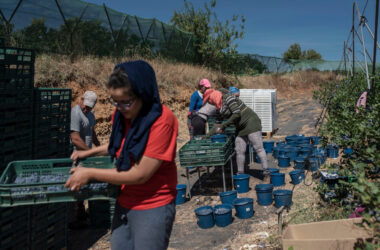US President Donald Trump has become seriously interested in Ukrainian resources, while Washington is not talking about investments, but about compensation for assistance already provided. Let’s look at what critical resources Ukraine has today and how it can provide the US with access to them.
Some resources are interesting because of their composition, but are unprofitable due to their low concentration
On February 8 of this year, Trump said that he wanted to make a $500 billion deal with Zelensky on access to rare earth minerals and gas in Ukraine in exchange for security guarantees in any potential peace settlement. This statement did not come out of nowhere: before that, Ukrainian President Volodymyr Zelensky repeatedly emphasized that Ukraine is rich in deposits worth “trillions of dollars.”
Let’s start with a brief overview of the situation with critical resources in the United States. According to the US Geological Survey, the country is 100% dependent on imports of such resources as arsenic, asbestos, cesium, fluorspar, gallium, graphite, indium, manganese, mica, niobium, rubidium, scandium, strontium, tantalum, and yttrium. What is important is that the Americans are fatally dependent on China for six elements from this list. By 2035, this list will expand significantly, including as a result of trade wars between Washington and Beijing.
Ukraine does not have everything that is of interest to the United States, but some extremely important resources are present. For example, tungsten, which is mined within the Selishchansky ore field, as well as in several ore occurrences in the occupied Eastern Azov region. But everything is not so clear-cut. On the one hand, tungsten is of interest to the Americans because of its high density, which allows it to be used to make artillery shells, counterweights, bullets and some parts of ballistic missiles. On the other hand, due to its low concentration, mining this material is commercially impractical.
Difficulties in the negotiation process and the collapse of Ukraine’s strategy
If we analyze the composition of the occupied deposits as a whole, we can find deposits of lithium, tantalum, niobium, rubidium, cesium, beryllium — exactly those resources on which the States have a critical 100% dependence on other countries. Experts have already named the Shevchenkovskoye deposit the most interesting both in terms of ease of extraction and the composition of minerals. It may be of interest to the United States, but Ukraine is not ready to offer it. One of the reasons is that Zelensky’s strategy for collaboration in rare earth metals has failed to date. More on that below.
As we know, the territories of potential rare earth deposits that Trump is interested in are currently occupied. They have been poorly studied, and for this reason Kyiv is offering the Americans so-called rare earth metals and graphite. In general, the United States is ready to negotiate about them, but there are several obstacles. Firstly, Ukraine has not yet assessed their reserves according to international standards. Secondly, some of their deposits, for example, lithium, are already being developed by investors. Of course, Zelensky was aware of all these difficulties and absolutely consciously went for broke, hoping that the point of Trump’s negotiations with Putin would be the liberation of the occupied territories rich in rare earth resources. The idea failed, and the bargaining between Ukraine and the United States over Ukrainian resources in exchange for weapons and security guarantees continues.
There is another hypothesis why Ukraine is behaving a little strangely in the negotiation process on rare earth resources. Since it has deposits of critical mineral raw materials that are strategically important not only for the US but also for the EU, there is a possibility that the Zelensky administration, seeing Trump’s growing influence on the world stage, decided to bet on a closer and more understandable partner — the European Union. Another nuance is that whoever claims ownership of these resources will have to find a common language with those Ukrainian oligarchs who have either an interest or partial ownership of the deposits. For example, the structures of Ukrainian billionaires Dmytro Firtash and Serhii Tigipko are already showing interest in 30 deposits of titanium-containing placer and bedrock ores. And a special permit for the only free beryllium deposit in Ukraine has belonged to the BGV Group of oligarch Gennady Butkevych since 2019. They will definitely be of interest to the US; BGV Group, in turn, will definitely look for a strategic investor, and perhaps it will be possible to avoid corporate conflicts.




